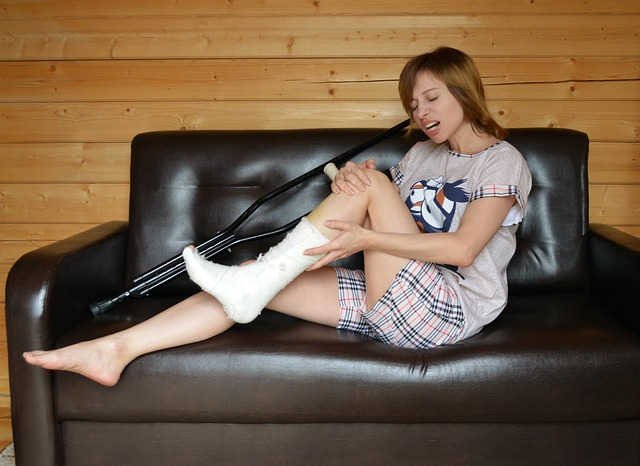Author: Mr Oliver Eaton BSc (Hons), PG.Cert – Orthopaedic Specialist
Reviewed by: Mr William Sharples BSc (Hons) – Pain Management Expert
Last Updated: September 2025
In this article, you will find out everything you need to know about back of thigh pain and the most effective ways to treat it, including an advanced treatment called Prolotherapy.
Overview
Pain in the posterior aspect of the thigh is disconcerting and inconvenient. Understanding the possible causes, recognizing when to be worried, and taking the appropriate steps to relieve any discomfort is important. Various circumstances—including muscle strains, nerve compression, and underlying medical disorders such as sciatica and hamstring injuries—can lead to posterior thigh pain.
Emergency note: Pain with tingling, numbness, leg weakness, marked swelling, chest pain, or shortness of breath can indicate a medical emergency. Seek immediate care.
In this comprehensive article, we’ll cover the key causes, red flags, evidence-based self-care, medical options, and where Prolotherapy may fit—so you can return to moving confidently.
What Causes Pain in the Back of Your Thigh?
Back-of-thigh discomfort (posterior thigh pain) has several common sources. Below are the most frequent:
Hamstring Strain
One of the most common causes, a hamstring strain occurs when the muscles at the back of the thigh are stretched or torn due to sudden movements, overexertion, or inadequate warm-up. Symptoms include sharp pain, swelling, bruising, and difficulty walking or bending the knee. Early management focuses on relative rest, ice, compression, and elevation.
Sciatica
Compression or irritation of the sciatic nerve (running from the lower back down the leg) can cause pain radiating into the posterior thigh, often with numbness, tingling, or weakness. Activity modification, gentle nerve-friendly mobility work, and medical assessment can help guide recovery.
Hamstring Tendinopathy
Degeneration or inflammation of the hamstring tendons (often near the sit bone) can lead to persistent posterior thigh pain, especially with sprinting, bending forward, or prolonged sitting. Management typically includes progressive loading (eccentric and isometric exercises), activity modification, and adjunctive therapies as required.
Bursitis
Inflammation of a nearby bursa can cause focal tenderness that may radiate toward the knee. Because bursitis can mimic other causes of back-of-knee pain, accurate assessment is important. Treatment ranges from load management and physiotherapy to injections in select cases.
Nerve Compression
Other nerves (e.g., femoral or lateral femoral cutaneous) can be irritated by disc issues or soft-tissue entrapment, causing pain and sometimes altered sensation. A tailored rehab plan that strengthens supportive muscles and addresses mechanics can help relieve pressure and symptoms.
When Should I Be Concerned About Thigh Pain?
Many cases settle with self-care in a few days. However, seek prompt medical evaluation if any of the following occur:
- Sudden intensity or a “pop”: Suggests a significant tear or avulsion injury.
- Inability to bear weight or walk normally
- Progressive numbness, tingling, or weakness (possible nerve involvement)
- Fever, redness, warmth, or significant swelling (possible infection or DVT)
What to Do If the Back of Your Thigh Hurts
Rest & Ice
Reduce aggravating activity. Apply ice packs 15–20 minutes every few hours for the first 48–72 hours and elevate when possible.
Pain Relievers
Short-term over-the-counter options (e.g., ibuprofen) may help reduce pain and inflammation. Always follow label guidance and seek advice if you have medical conditions or take other medications.
Early Mobility
Within pain limits, begin gentle range-of-motion and isometrics. Avoid stretching into sharp pain early on—progress load gradually.


If symptoms persist or worsen despite self-care, arrange a professional assessment to clarify the diagnosis and personalize treatment.
Treatment Options
Physiotherapy
A physiotherapist can guide progressive loading to rebuild tendon and muscle capacity, improve flexibility, and address contributing factors (hip/core control, running mechanics, workload errors). Manual therapy and modalities may support short-term relief.
Injections & Medicines
Depending on diagnosis, your clinician may discuss anti-inflammatory strategies, image-guided injections, or other targeted interventions. For nerve-related symptoms, specific neural mobility work or pain-modulating medications may be considered.
Prevention Tips
- Warm up dynamically; progress training volume and intensity gradually.
- Include hamstring strength across angles (isometrics, eccentrics like Nordic curls).
- Cross-train and schedule recovery days; prioritise sleep and nutrition.
- Address technique errors in sprinting, lifting, or sport-specific skills.
What Causes Thigh Pain in Females?
Menstrual Cramps
Referred pain from uterine contractions can radiate to the posterior thigh during menstruation. Options include heat therapy, over-the-counter relief, and (when appropriate) hormonal strategies guided by a clinician.
Pregnancy
Postural changes and increased pressure on nerves/muscles can irritate the thigh. Gentle strengthening (glutes, deep core), stretching, supportive footwear, and pregnancy pillows often help.
Pelvic Issues
Conditions such as endometriosis or pelvic inflammatory disease can refer pain to the thighs. Medical evaluation is important for tailored management.
Osteoporosis
Bone density loss (more common post-menopause) raises stress-fracture risk. A plan including strength training, balance work, calcium/vitamin D as advised, and load management is recommended.
Does Leg Pain Indicate Heart Problems?
Thigh pain is usually musculoskeletal, but certain cardiovascular issues can cause leg symptoms:
Peripheral Artery Disease (PAD)
Narrowed leg arteries reduce blood flow, causing exertional cramping (“intermittent claudication”) that eases with rest. If suspected, seek assessment.
Angina (Uncommon Presentation)
Angina typically causes chest discomfort (sometimes arm/jaw), not isolated thigh pain. Distinguishing angina from PAD is important because the causes and treatments differ.
Blood Clots
Deep vein thrombosis (DVT) can cause leg pain and swelling (often calf-dominant). Untreated clots can travel to the lungs (pulmonary embolism). Urgent assessment is essential if suspected.
Prolotherapy
Some painful posterior-thigh structures (e.g., proximal hamstring tendons and supporting ligaments) have a relatively limited blood supply and may heal slowly after injury.
What it is: Prolotherapy involves injecting a regenerative solution into targeted structures to stimulate a healing response and support tissue repair. It is used alongside a comprehensive rehab plan to address the underlying drivers of pain and dysfunction.
At ProHealth Clinic, we assess candidacy carefully and integrate Prolotherapy with loading progressions, biomechanics coaching, and return-to-sport planning.
Case Snapshots
Recreational Runner, Age 38
Gradual onset sit-bone pain during speed sessions. Exam consistent with proximal hamstring tendinopathy. Managed with isometric → eccentric loading, gait tweaks, and staged return; later received targeted Prolotherapy to stubborn tender points. Returned to 10K racing pain-free over 10 weeks.
Desk-Based Professional, Age 46
Posterior thigh ache and intermittent tingling after prolonged sitting; MRI showed small L5/S1 disc protrusion. Physio-led core/hip strengthening, neural mobility, and workstation changes resolved symptoms; maintenance program prevents recurrence.
Frequently Asked Questions
What does posterior thigh pain usually mean?
Most often a hamstring strain/tendinopathy or referred pain from the lower back/sciatic nerve. Assessment clarifies the source and guides treatment.
How long does a hamstring strain take to heal?
Mild strains can settle in 2–3 weeks with appropriate loading; more significant tears may require 6–12+ weeks. Early accurate diagnosis shortens timelines.
Should I stretch a painful hamstring?
Avoid aggressive stretching early on. Start with pain-tolerant isometrics and gradually layer in mobility and eccentric strength as symptoms allow.
When should I see a doctor?
If pain is severe, you cannot bear weight, there’s a pop/bruising, neurological symptoms, fever/redness/swelling, or symptoms persist beyond 1–2 weeks despite self-care.
Contact ProHealth Clinic Today for Your FREE 15-Minute Discovery Call
Don’t let pain in the back of thigh control your life any longer. Join the thousands of patients who have found lasting relief through prolotherapy at ProHealth Clinic.
Get in Touch
Phone: +44 1234 380345
Email: info@prohealthclinic.co.uk
Our Clinic Locations
London: 104 Harley Street, Marylebone, W1G 7JD
Manchester: The Hadley Clinic, 64 Bridge Street, M3 3BN
Bedford: The Village Medical Centre, Kingswood Way, MK40 4GH
All clinics offer the same award-winning prolotherapy treatment with convenient appointment times, including evenings and weekends.
References
- Hauser RA, Lackner JB, Steilen-Matias D, Harris DK. A systematic review of prolotherapy for chronic musculoskeletal pain. Clin Med Insights Arthritis Musculoskelet Disord. 2016;9:CMAMD.S39160.
- Sherry MA, Best TM. A comparison of 2 rehabilitation programs in the treatment of acute hamstring strains. J Orthop Sports Phys Ther. 2004;34(3):116-25.
- Stafford MA, Peng P, Hill DA. Sciatica: a review of history, epidemiology, pathogenesis, and the role of epidural steroid injection in management. Br J Anaesth. 2007;99(4):461-473.
Disclaimer: This article is for informational purposes only and does not substitute for professional medical advice. Always consult your healthcare provider before making treatment decisions.
